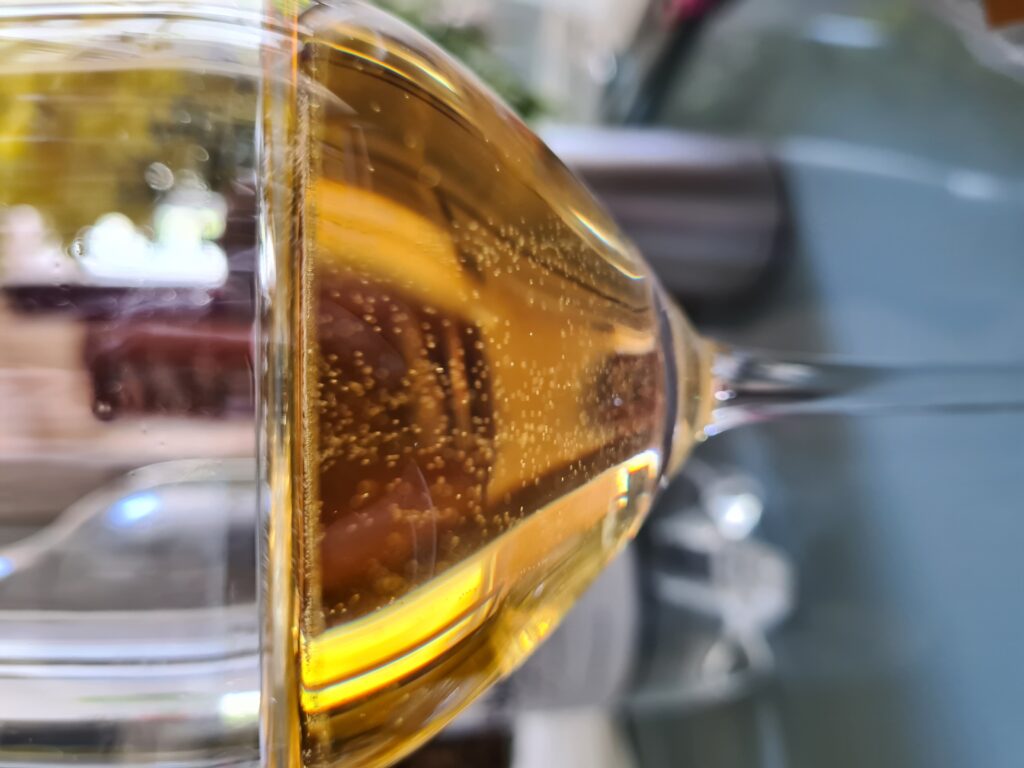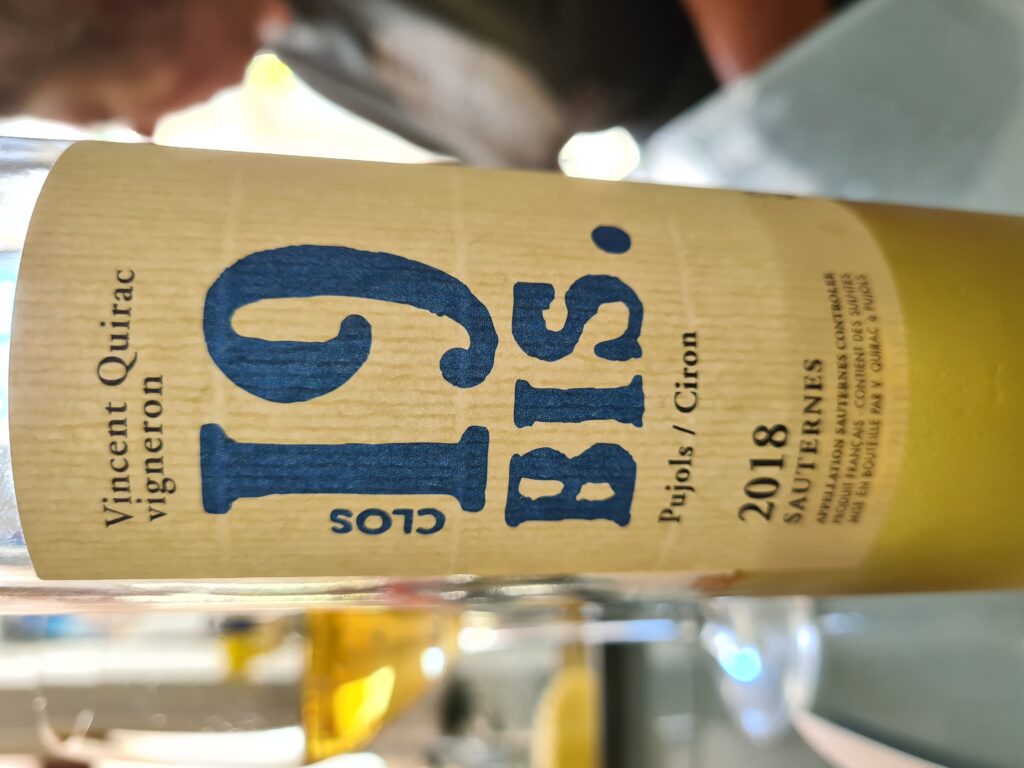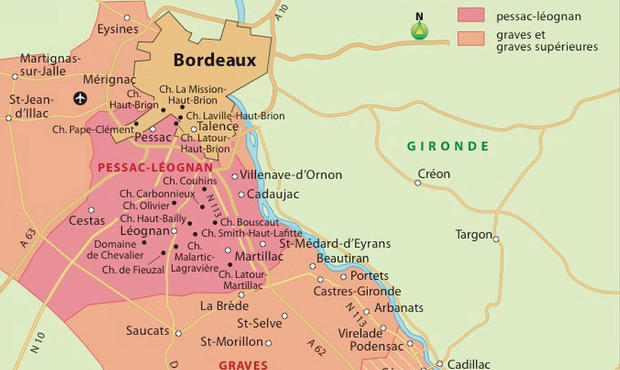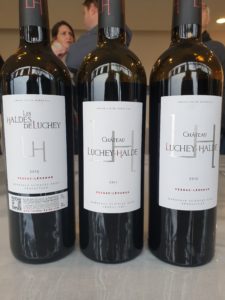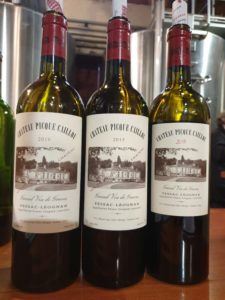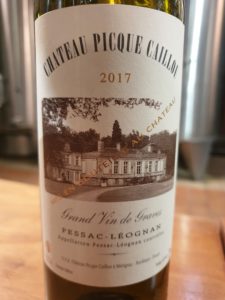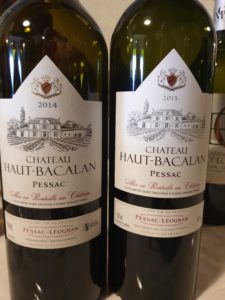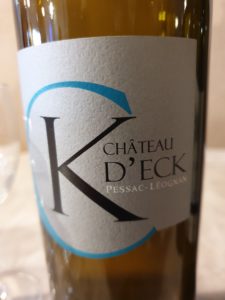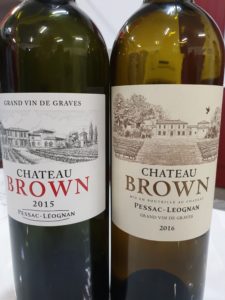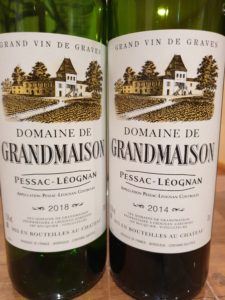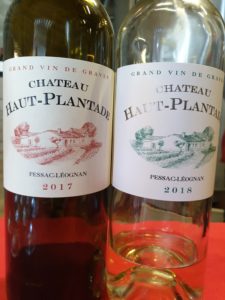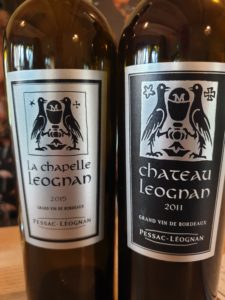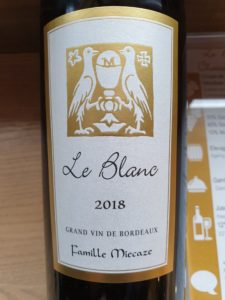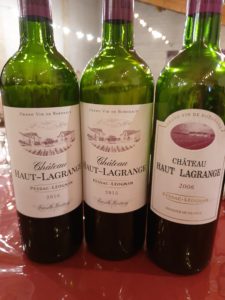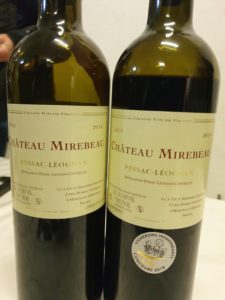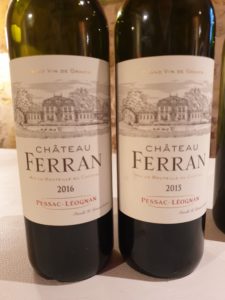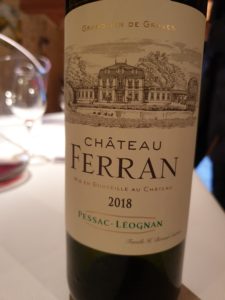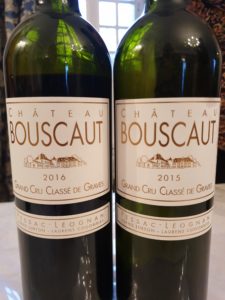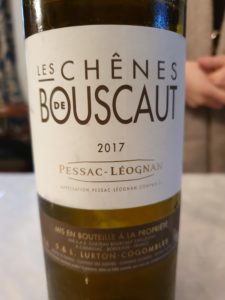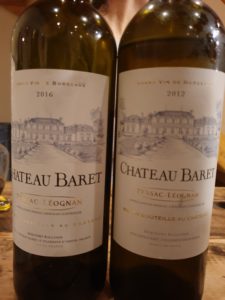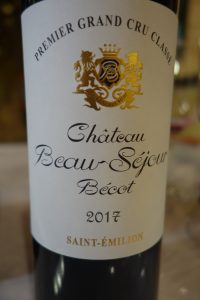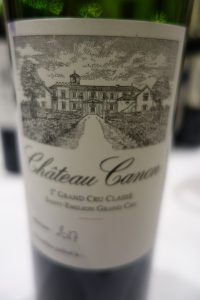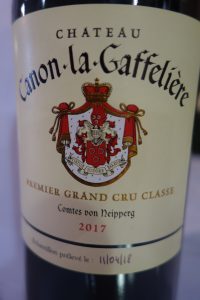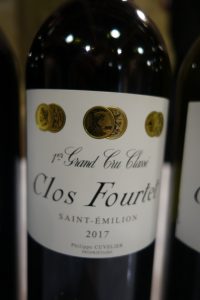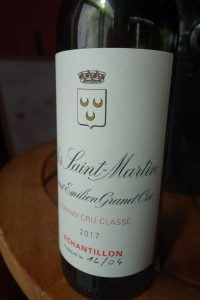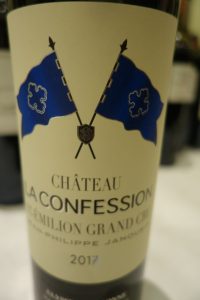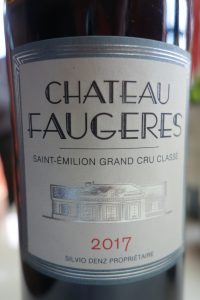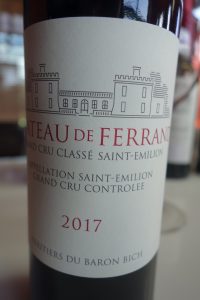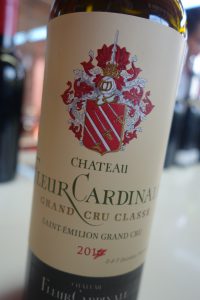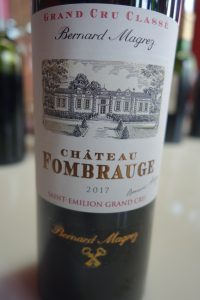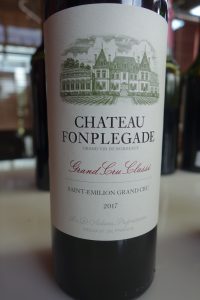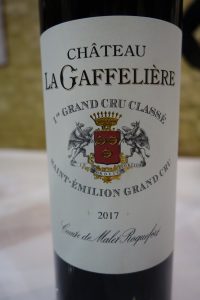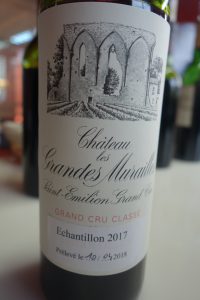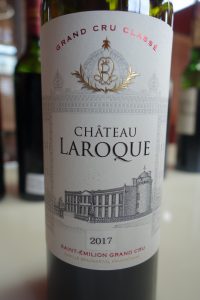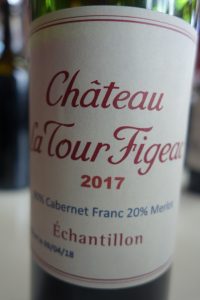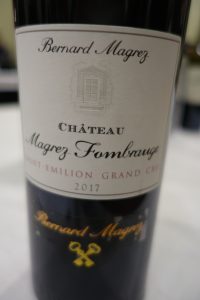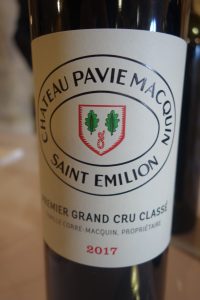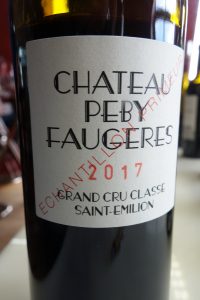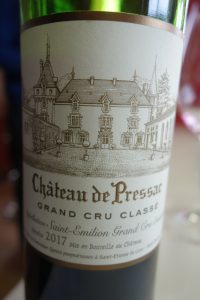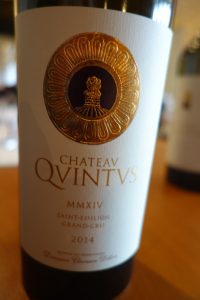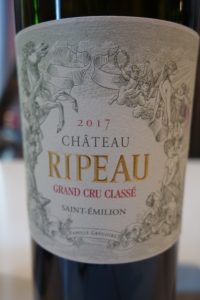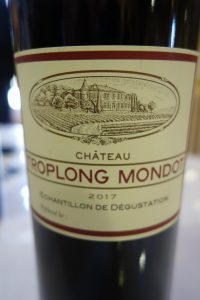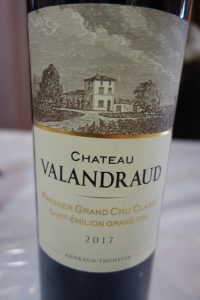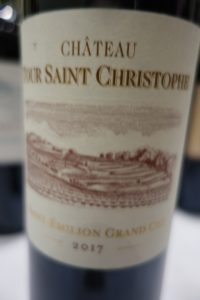These are the last of my en primeur tasting notes:
Beauséjour-Bécot
N: Fine, ripe, pure berry fruit with some tarry overtones and earthiness. Great bouquet.
P: Rich and fresh, but a little flabby despite the limestone minerality that comes through. Bit short and hard, but age will do wonders for the embryonic balance. Good to very good.
Bellevue
N: Bit wild and woolly with aromas of blackberry, oak, and terroir (earth).
P: Quite rich with a proper tannic structure that kicks in and a fresh tannic finish. Borderline too much oak. Traditional style. Vinous and ageworthy. A wine to watch out for. Good.
Canon
N: Powdery, backward at the present time.
P: Starts out like a great Pomerol, going on to show lovely fruit and an assertive development on the palate. Strong, but not overly so. Great balance and long, fine aftertaste. A true vin de terroir with wonderful potential. Very good, and if the nose blossoms, excellent.
Canon La Gaffelière
N: Very primary and rich with aromas of red fruit (redcurrant) jelly
P: Great structure with good tannin to complement the roundness. Unmistakably Saint-Emilion and a very well-made wine that truly brings out the best of each grape variety. Very good.
Clos Fourtet
N: Bright fruit in minor mode. Some sweetness just emerging.
P: Lovely texture and purity. Aristocratic with a velvety aftertaste and fine follow-through showing excellent minerality. Good, and very good if the bouquet comes out more.
Clos Saint Martin
N: Pure, sweet, blackberry fruit.
P: Heavy mouth feel. Lovely silky texture. Concentrated, but elegant. Tremendous balance. Good acidity. Tart red fruit flavors. Very long mineral finish. Good to very good if the bouquet develops more.
La Confession
N: Black fruit jelly. A little jammy and with an ethereal spirity quality.
P: Starts off with a very attractive velvety texture, then segues into a very rough and unyielding finish. Will surely even out to some extent over time, but the aftertaste seems to detract from the overall impression at the present time. OK.
Couvent des Jacobins
N: Smooth, slick, cherry-vanilla bouquet with lovely floral overtones. Quite elegant.
P: Big mouthful, then a little weak and diluted. Round, then showing tea-type tannin not of the highest quality. Cherry and blackcurrant flavors. Natural, not doctored. Nippy aftertaste with decent length. Not as promising as the nose. Good.
Faugères
N: Seems not very expressive at first, but hints of chocolate, smoke, cranberrry, and cherry-vanilla come out after all.
P: Fine mouth-filling attack going on to show some hotness and virile tannins. Long tangy aftertaste without dryness on the finish. Limestone terroir comes through. Good to very good.
Ferrand
N: Showing some mint and camphor aromas. Not much fruit and a bit odd.
P: Strong liquorice/aniseed component. Spreads out well on the palate with textured tannin. A little harder than most – but also more serious than most. Long tannic aftertaste. Worthwhile ageing potential. Good.
Fleur Cardinale
N: Toasty oak, touch spirity, dark fruit.
P: Great gentle start, but then goes into piercing acidity. Gummy texture accompanied by a certain hotness. Not a good time for this wine. Needs to be retasted with some age. Not as positive as I’m accustomed to from this estate. OK.
Fombrauge
N: You have to look for it, but there are some cherry-vanilla aromas.
P: Big sensual mouth feel. Hearty, definitely alcoholic, and fairly oaky on the palate, but is there enough fruit to back this up? Average on the attack and then, wham!, lots and lots of tannin. Unbalanced, but perhaps upgraded in ten years’ time. OK.
Fonplégade
N: Little dusty. Engaging, deep, enticing wildberry aromas.
P: Lovely, tight-knit, yet smooth texture. Quite fine. Goes on seamlessly to show good acidity, great balance, and a velvety aftertaste. Very good.
La Gaffelière
N: Soft and simple, with good oak. Not very expressive at this stage.
P: Good Merlot attack followed by the backbone and length of Cabernet Franc. Medium-long, mineral, fresh, and slightly thin aftertaste. The oak is not obtrusive. Lively with a candied fruit quality. Nothing forced. Fresh, subtle finish. Good to very good.
Grandes Murailles
N: Powdery, with candied black fruit and some toasty oak.
P: Good attack and follow-through with plenty of grip and characterful oak on the finish. Serviceable, but watch out for that oak ageing. OK.
Larcis Ducasse
N: Soft, with some floral notes as well as meaty overtones.
P: Seems a little flabby at first and with a somewhat weak middle palate, but this impression is followed by waves of fresh fruit, new oak, and minerality. A bit dry on the aftertaste, but chances are everything will coalesce. When all is said and done: very good.
Laroque
N: Prune and liquorice nuances along with black fruit jelly.
P: Very soft to begin with, moving on to show healthy acidity. Silky, layered, and pure. Well made. Gutsy, yet refined. Long aftertaste. Good plus.
La Tour Figeac
N: Subtle briar, cherry, and tobacco aromas. Excellent.
P: Rich and showing tremendous balance, then gradually and effortless goes into a fine tannic aftertaste with good minerality and acidity. Great balancing act between roundness and rigor. Maybe a tad dilute on the attack, but still: excellent.
Magrez Fombrauge
N: Graham cracker and ethereal fruit.
P: Medium-heavy mouth feel and an impression of sweetness. Big and powerful with plenty (too much?) oak. Somewhat alcoholic and a little dry on the finish. Needs to come together. Too hard and overwhelming at this early stage. Good.
Pavie Macquin
N: Oak and bright fruit. Primary red fruit aromas.
P: Sensual mouth feel. Vibrant and upfront. Medium light at first, dips, and then goes into a very long mineral aftertaste with candied fruit flavors. Exceeds expectations. Very good.
Péby Faugères
N: A little something metallic, accompanied by hints of roast coffee beans, beeswax, and varnished wood, as well as empyreumatic notes and a biscuity quality.
P: Big, sweet, strong, and somewhat hot. Heaps of toasty oak on the massive aftertaste. Heavy mouth feel. Is it permissible to prefer the little brother (Faugères)? Good.
Poesia (PHOTO NOT SHOWN)
N: Modern, upfront, fruity (berry fruit). Reminiscent of New World wines.
P: This New World quality carries over to the palate, with is rich and powerful, but nevertheless backed up by good acidity. Exuberant with good tension. Original and successful modern style. Good.
Pressac
N: Pure, natural, and direct with forest floor aromas. Subtle and attractive with a definite floral component.
P: Chunky and round, than curiously hot and a bit acidic. As wonderful as the bouquet is, the wine falls down somewhat on the palate. Too tannic and top-heavy with a dry finish. OK.
Quintus
N: Attention-getting and very seductive. Some slight fermentation (tanky) aromas.
P: Plenty of volume with vibrant acidity and delicious blackberry flavors. Great velvety texture and some violet nuances. Very good.
Ripeau
N: Very green with some floral notes, as well as roasted and brettlike aromas.
P: Some greenness on the palate too, but this is much better than the bouquet. Polished rusticity and the floral component on the nose comes through again. Curious. Textured, but harsh aftertaste. OK.
Tour Saint Christophe
N: Fine, well-focused. Very fresh and rather uncomplicated.
P: Thick, rich, smooth, and round. Seemingly flabby to begin with, then going into a weak middle palate before showing power, acidity and minerality. A fruit-driven commercial style with a finish that gives it a more serious flavor. Good.
Troplong Mondot
N: Toasty oak and candied black fruit. Strong, sweet blackberry overtones with meaty nuances.
P: Almost syrupy on the attack and definitely powerful (high alcohol – 14.6°). Lashings of oak. Not my kind of balance. Somewhat redeemed on the aftertaste. OK.
Valandraud
N: Deep, inky, subtle and upfront.
P: Starts out with a syrupy quality. Very rich indeed and very Merlot, with textured tannin. Not overoaked, but seems a little short. Good.

